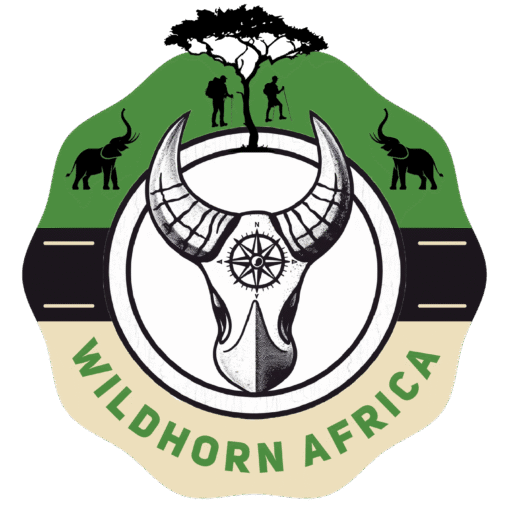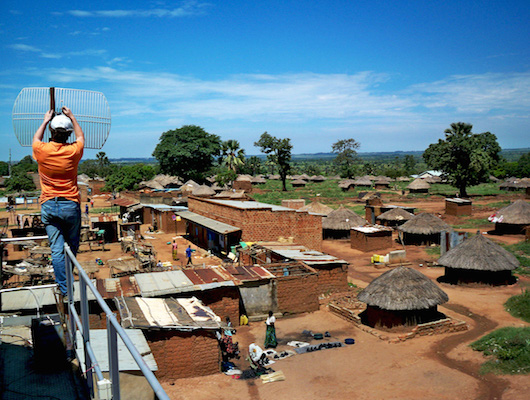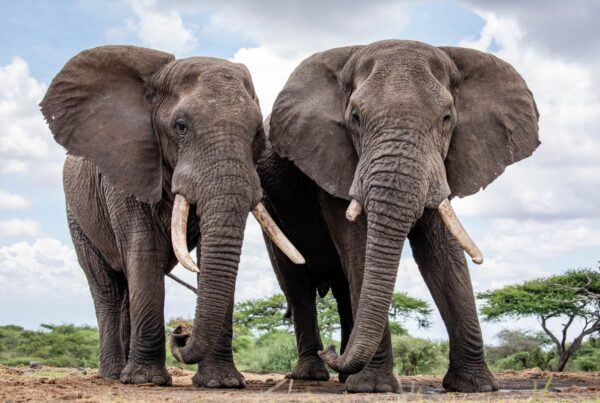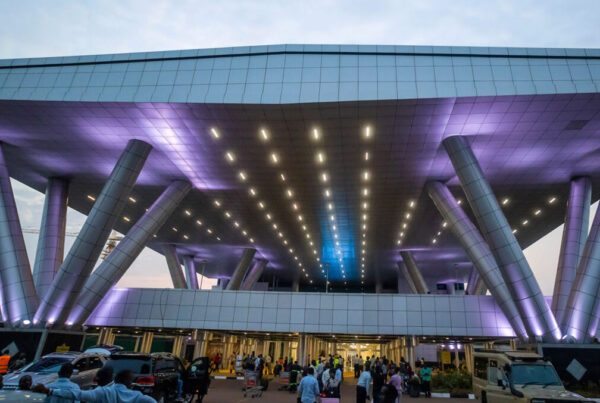What is the state of internet and connectivity while on safari in Uganda? | Internet and Connectivity on Safari in Uganda | Digital Access & Wi-Fi Guide
There is something profoundly humbling about being surrounded by the raw pulse of the African wilderness — the distant roar of a lion at dusk, the flutter of birdsong at dawn, the quiet rhythm of nature unbroken by digital noise. Yet even amid such timeless serenity, the modern traveler inevitably wonders: “Will I have internet on safari in Uganda?” In an era defined by constant connection, where every moment can be shared instantly with the world, it is natural to question how connectivity fits into the safari experience.
Uganda, the Pearl of Africa, has evolved into a destination where untamed nature coexists harmoniously with modern convenience. While the country’s parks and reserves remain deeply wild, its telecommunications infrastructure has expanded dramatically in recent years, ensuring that visitors can stay connected — when they wish to be — even in some of the most remote corners of the land.
Still, the experience of internet and connectivity in Uganda is not uniform. It varies widely between cities, lodges, and national parks, shaped by geography, technology, and even the philosophy of safari travel itself. Understanding this balance is essential for travelers who wish to remain informed, safe, and connected while immersing themselves fully in Uganda’s wilderness beauty.
The Modern Landscape of Connectivity in Uganda
Uganda’s internet infrastructure has advanced steadily over the past decade, driven by growing mobile penetration, fiber-optic expansion, and competition among telecom companies. The nation’s connectivity backbone now stretches from Kampala and Entebbe to far-flung districts like Kisoro, Fort Portal, and Gulu, covering not just urban centers but many rural communities along major travel routes.
Most of Uganda’s internet access is powered by mobile broadband rather than fixed-line connections. This means travelers rely heavily on 3G, 4G, and increasingly 5G networks provided by major telecom operators such as MTN Uganda, Airtel Uganda, and UTL. These providers cover the majority of populated regions, including roads leading to popular safari destinations.
While speed and reliability differ between regions, Uganda’s mobile networks have proven impressively robust, even in locations that were once entirely cut off from digital communication. A journey from Kampala to Bwindi, Queen Elizabeth, or Murchison Falls no longer feels disconnected from the world; connectivity ebbs and flows, but it rarely disappears entirely.
However, the essence of safari lies in balance. While Uganda’s infrastructure allows connection, the remote beauty of its parks reminds travelers that sometimes, the most profound connection is the one made with nature itself.
Connectivity in Major Urban Gateways
Before venturing into the wild, most safaris begin in Kampala, Entebbe, or Jinja — cities that act as digital anchors. Here, internet access rivals that of many developed countries.
Kampala, Uganda’s bustling capital, enjoys extensive fiber-optic coverage. Hotels, cafés, and co-working spaces provide high-speed Wi-Fi, and mobile data speeds often exceed 20 Mbps in central areas. This allows travelers to handle all pre-safari logistics effortlessly — confirming bookings, uploading travel documents, or communicating with guides.
Entebbe, home to Uganda’s international airport and many boutique lodges, offers similarly reliable service. Its lakeside charm is complemented by strong 4G reception and stable hotel Wi-Fi, making it an ideal last stop before the wilderness.
Jinja, the adventure capital on the banks of the Nile, has improved connectivity over recent years. Many lodges near the river now offer decent Wi-Fi, though speeds can fluctuate during peak evening hours when demand increases.
These cities form the digital threshold — the last points of consistent, high-speed access before travelers cross into Uganda’s wild frontier. Once the safari begins, connectivity transforms from a guarantee into a shared experience between nature and technology.
Internet Access Inside National Parks and Safari Lodges
Uganda’s national parks are remote by design. Their isolation preserves wildlife habitats and protects delicate ecosystems from human interference. As such, internet access varies significantly across parks, depending on geography, infrastructure investment, and proximity to towns.
In Queen Elizabeth National Park, the country’s most popular safari destination, connectivity is relatively good. Lodges near Kasese, Mweya Peninsula, and Ishasha often provide Wi-Fi powered by mobile networks or satellite systems. Signal strength ranges from moderate to strong near main roads but weakens deeper inside the park.
In Murchison Falls National Park, lodges on the southern bank of the Nile enjoy partial network coverage, while the northern region remains less connected. Many properties here use signal boosters or satellite Wi-Fi, ensuring guests can send messages or check emails, though streaming or video calls may be limited.
In Bwindi Impenetrable Forest, home to Uganda’s iconic mountain gorillas, connectivity becomes more challenging. The park’s steep terrain and dense vegetation hinder signal strength. However, several lodges around Buhoma, Nkuringo, and Rushaga have installed limited Wi-Fi networks using boosters or satellite links. These connections, while slower, allow travelers to share photos, communicate with family, or post updates — a delicate thread of connection amid the silence of the jungle.
Kidepo Valley National Park, Uganda’s most remote and pristine wilderness, remains the least connected. Cellular service is patchy, and internet access is typically limited to satellite links at high-end lodges. Yet, for many travelers, this digital silence becomes one of Kidepo’s most treasured features — a true escape from the world’s noise.
In all parks, the rule is simple: connectivity exists, but it is deliberately imperfect — a reminder that wilderness is meant to be experienced, not streamed.
The Role of Safari Lodges in Digital Access
Safari lodges in Uganda have adapted creatively to the growing demand for reliable internet. Many have installed Wi-Fi hotspots powered by solar energy or mobile routers, while luxury properties often use satellite internet to ensure broader coverage.
However, lodge connectivity often comes with intentional limitations. Some restrict access to communal areas like lounges or dining terraces to encourage guests to unplug in their private rooms. Others turn Wi-Fi off during certain hours to conserve power and preserve tranquility.
In recent years, eco-lodges have embraced a philosophy of “digital detox safaris.” These lodges promote mindfulness, encouraging travelers to disconnect from digital devices and reconnect with nature. The absence of internet is reframed not as a drawback but as liberation — a chance to listen to the whispers of the forest and the rhythm of life unmediated by screens.
For travelers requiring steady connectivity, it is advisable to confirm Wi-Fi availability before booking. Most mid-range and luxury lodges now list connectivity details transparently, reflecting Uganda’s growing balance between wilderness experience and modern expectation.
Using Mobile Data and Local SIM Cards
For those who prefer independent access, Uganda’s mobile networks offer the most practical and affordable solution. Purchasing a local SIM card upon arrival provides near-nationwide coverage and flexibility.
Both MTN Uganda and Airtel Uganda offer visitor-friendly packages, with data bundles ranging from short-term daily plans to monthly deals. A SIM card can be obtained easily at the airport or in city shops with a valid passport.
4G coverage extends to most urban centers and many national park borders, including Mbarara (for Lake Mburo), Kasese (for Queen Elizabeth), and Fort Portal (for Kibale). In remote parks like Bwindi or Kidepo, the signal weakens, but partial connectivity is still achievable near villages or lodges with signal amplifiers.
Tethering your phone as a hotspot allows laptops or tablets to connect, though speeds depend on proximity to towers and terrain conditions. For essential communication, mobile data in Uganda remains dependable and affordable, with average costs among the lowest in East Africa.
For the modern traveler, carrying a local SIM provides peace of mind — a lifeline for emergencies and a bridge between the digital and natural worlds.
The Challenge of Geography and Terrain
Uganda’s topography is both magnificent and challenging. Its rolling hills, volcanic mountains, and dense forests create natural barriers that influence connectivity.
In high-altitude regions such as the Rwenzori Mountains, steep valleys can block cellular signals entirely. Similarly, Bwindi’s impenetrable forest canopy dampens transmission, creating “dead zones” where neither Wi-Fi nor mobile data penetrates easily.
The government and private telecom companies have made strides in expanding coverage to remote districts through new towers and fiber links, but the priority remains urban corridors and highways. This means travelers entering deep wilderness areas must accept intermittent connection as part of the experience.
In many ways, these moments of disconnection are gifts. They allow travelers to experience Uganda’s landscapes with undivided attention — the way explorers once did, guided by the rhythm of rivers and the calls of unseen birds rather than by notifications.
 Connectivity and Conservation: The Ethical Dimension
Connectivity and Conservation: The Ethical Dimension
Internet expansion brings opportunity, but also ethical questions. In Uganda’s national parks, connectivity must coexist with conservation. Excessive infrastructure — towers, cables, and noise pollution — can disrupt animal habitats and spoil the visual harmony of natural landscapes.
The Uganda Wildlife Authority (UWA) and environmental partners have adopted a cautious approach. Connectivity solutions are carefully placed outside core conservation zones, ensuring minimal ecological impact. Satellite technology, solar energy, and low-emission routers are increasingly used to minimize footprints while supporting responsible tourism.
Furthermore, digital access can strengthen conservation itself. Rangers and scientists use networked devices to monitor wildlife, track poaching activity, and report ecological data in real time. What once took days of manual reporting now happens instantly, improving efficiency and protection.
Thus, while connectivity introduces convenience, it also deepens the bond between technology and sustainability. The goal is not to dominate nature with signals, but to use connection as a tool of stewardship.
The Human Side of Connection: Communities and Communication
In Uganda’s rural and park-adjacent communities, mobile connectivity has transformed livelihoods. Local guides, porters, and artisans now use mobile phones to coordinate work, receive payments, and market services. Tour operators can communicate with lodges and drivers instantly, enhancing safety and coordination.
Travelers, too, benefit from this digital bridge. Staying in touch with family, confirming logistics, or accessing emergency services provides reassurance. Yet, perhaps more importantly, the internet fosters cultural exchange — allowing visitors to share Uganda’s beauty responsibly with the world and inspiring global awareness of its conservation efforts.
Still, the human connection remains the most powerful network of all. Conversations with rangers, laughter with lodge staff, and moments of shared silence under starlit skies — these interactions transcend any Wi-Fi signal.
The Reality of Power Supply and Energy Reliability
Internet access depends not only on signal coverage but also on electricity. Uganda’s safari lodges and rural areas rely heavily on solar power or generators due to limited grid access. This can affect the consistency of Wi-Fi availability, especially in off-grid properties.
Many lodges conserve energy by turning off routers and power systems during midday or late-night hours. Travelers should charge devices whenever possible and carry portable power banks or solar chargers for extended trips.
Despite these challenges, Uganda’s renewable energy movement is growing rapidly. Solar panels now illuminate villages near Bwindi and Kidepo, bringing both light and connection to regions once cut off from modern amenities.
Energy resilience is becoming a cornerstone of sustainable tourism — ensuring that connectivity thrives without compromising environmental ethics.
Staying Safe and Secure Online
While Uganda’s internet infrastructure is generally safe, basic precautions remain advisable. Using virtual private networks (VPNs) on public Wi-Fi adds privacy, especially when accessing sensitive accounts. Lodges and cafés usually secure their networks, but open connections may still expose data to risk.
Travelers should avoid conducting major financial transactions on shared Wi-Fi and ensure their devices are updated with security patches. Using strong passwords and disabling auto-connect features further enhances safety.
In remote regions, mobile network outages are rare but possible. Keeping important contact numbers written down and informing guides of communication plans ensures preparedness for temporary disconnections.
In Uganda’s wilderness, digital safety blends with physical awareness — staying connected responsibly, but never distracted from the beauty that surrounds you.
Embracing the Balance Between Connection and Escape
Perhaps the most profound realization during a safari in Uganda is that true connection often comes through disconnection. While Wi-Fi and mobile data are available, many travelers find that the moments without signal — the hours spent listening to rain over the forest, or watching elephants under a copper sunset — become the ones they remember most.
Uganda invites visitors to slow down, to rediscover simplicity, and to feel presence without mediation. Yet, when needed, the comfort of connectivity is never far away. You can share a photo from Bwindi one moment and still lose yourself in the silence of Queen Elizabeth the next.
This duality — digital access without dominance — defines the state of Uganda’s connectivity today. It reflects a country balancing progress with preservation, technology with tranquility, and human connection with ecological respect.
Conclusion: Connected, Yet Wild
The state of internet and connectivity in Uganda mirrors the essence of the country itself — vibrant, evolving, and beautifully balanced between the ancient and the modern. Travelers can expect reliable access in cities and along major safari routes, intermittent signals within parks, and rare but precious moments of total disconnection deep in the wilderness.
It is a system designed not to isolate visitors but to encourage mindfulness — a gentle reminder that the world can wait while the wild reveals its secrets.
To explore Uganda’s untamed beauty with expert guidance and comfort, it is recommended to book your Africa tours and safaris with WildHorn Africa. Their deep local knowledge, professional coordination, and commitment to sustainable travel ensure that every moment — whether connected or blissfully offline — is experienced safely, authentically, and memorably.
Because in Uganda, connection is not measured in megabytes but in moments — in the shared smiles of a village, the stillness of dawn, and the timeless bond between traveler and nature.





 WildHorn Africa – Authentic and unforgettable tours across Africa, guided by local experts who know the land, wildlife, and culture best.
WildHorn Africa – Authentic and unforgettable tours across Africa, guided by local experts who know the land, wildlife, and culture best.


